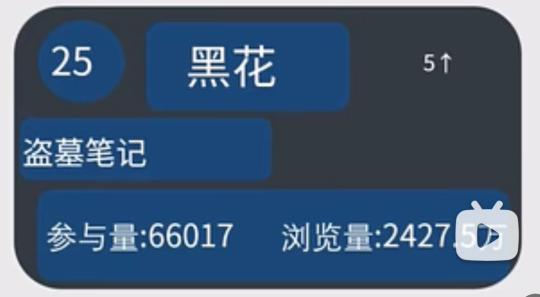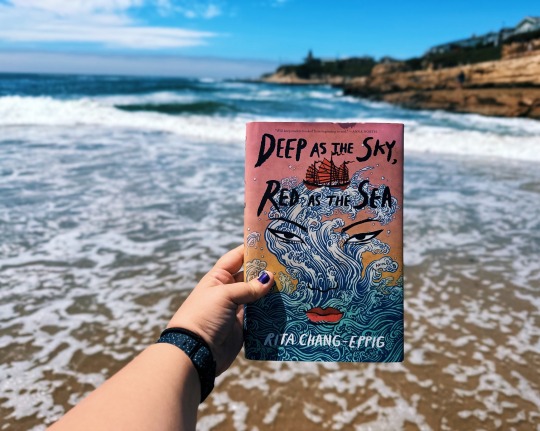#Chinese incursion
Explore tagged Tumblr posts
Text
The Senate on Tuesday unanimously adopted a resolution condemning China's incursions in the West Philippine Sea and its continued harassment of Filipino fishermen.
The measure also exhorted the Philippine government to take action in asserting its sovereign rights over the country’s exclusive economic zone (EEZ).
The resolution also calls on China to stop its “illegal activities” in accordance with the United Nations Convention on the Law of the Sea (UNCLOS) and with the 2016 ruling of the Permanent Court of Arbitration (PCA).
The adopted Senate Resolution 718 was the outcome of an all-member caucus on Monday where the senators discussed with Foreign Affairs Secretary Enrique Manalo and AFP chief Romeo Brawner Jr. the appropriate action on Senator Risa Hontiveros’ resolution which urges the Department of Foreign Affairs to bring China’s aggression before the United Nations General Assembly (UNGA).
In his manifestation after the adoption, Zubiri explained that Hontiveros’ resolution was not “watered down” but rather strengthened after the meeting with the country’s Foreign Affairs chief and the top military official.
“We came out with a strong consensus yesterday after the discussions with the West Philippine Sea Task Force, together with the AFP chief-of-staff General Brawner and DFA Secretary Manalo and actually we never watered down the resolution that we filed, we actually strengthened the first resolution that we initially filed with Sen. Risa,” Zubiri said.
“I think what happened here is we strengthened the position of the government. Now, we gave them several options to choose on how to deal with our neighbors in the north,” he added.
Among the courses of action enumerated in the adopted resolution are:
-Bringing international attention to China’s harassment of Filipino fishermen in the Philippine EEZ and its continued violation of the Hague Ruling and the UNCLOS
-Utilizing international fora to rally multilateral support for the enforcement of the Hague Ruling and raise awareness on the real situation in the WPS
-Engaging like-minded countries in various international organizations, meetings, and other fora to call on China to respect the Hague Ruling and the UNCLOS and subject to necessity and prudence
-Filing a resolution before the UNGA to call for the cessation of all activities that harass the Philippine vessels and violate the Philippines’ established rights in the WPS
-Pursuing such other diplomatic modes as the DFA may deem appropriate and necessary
3 notes
·
View notes
Text

// GUARDIAN //
#me? posting sunrise verse art? it's more likely than you think!#sunrise verse#also pspspspsps new artist signature i've decided to use my chinese surname to sign things#faster and prettier than what i've been doing (artfight user)#anywayyyyyyyyyy this is from like.......~107 AZ probably?#a couple years after the break in the treaty and the start of the incursion properly#but when xiaoge is still in his twenties (he's born in 85 AZ so he'd be about twentytwo)#the ranger system is in its infancy and no one really..................knows anything (about the ranger upgrades they're doing or how to#best fight the hive)#zhang ruitong is recently dead and xiaoge is zql but because he's an active ranger the zhang are more controlled by the board#than by xiaoge himself#(and yes before you ask—that board IS the origin of each sect hosting a ranger having a board#originally the only sect who hosted rangers was the zhang but when rangers became more common#they needed to expand their net of control. so the modern (thyme and rosemary era) boards were implemented#and they'll exist until around bronze gate construction era)#c.art#c.txt
12 notes
·
View notes
Text
Philippine Forces Heighten Patrols Amid Chinese Incursions
WPS.News Special ReportDateline: Manila, Philippines | April 19, 2025, 0600 PHT 🇵🇭 Philippine Forces Respond to Chinese Incursions in West Philippine Sea The Armed Forces of the Philippines (AFP) and the Philippine Coast Guard (PCG) have intensified patrols around Scarborough Shoal and Second Thomas Shoal following reports of increased Chinese maritime presence. While specific incidents…
#AFP PCG#April 2025#china#Chinese incursions#Guo Jiakun#Kanlaon Volcano#Maritime Security#News#Philippine Coast Guard#Philippines#Philippines-China relations#PHIVOLCS#President Marcos#Scarborough Shoal#Second Thomas Shoal#Seismic Activity#South China Sea#taiwan#weather conditions#West Philippine Sea
1 note
·
View note
Text
Russian President Vladimir Putin is skilled at escaping the optics of defeat. He came to power in 2000, projecting authority in Russia’s ongoing war against the breakaway region of Chechnya, where Russia did over time prevail. He put himself forward as a decisive leader in Georgia (via the 2008 Russo-Georgian War), in Ukraine (via the annexation of Crimea in 2014 and full-scale invasion in 2022), and in Syria (via a Russian military incursion in 2015). In none of these theaters has Putin notched a lasting success. Georgia is up for grabs, and Russia’s presence in fading away in Syria, but Putin will accept no responsibility for setbacks on the global stage. He always acts the victor.
With Ukraine, Putin can orchestrate scenes of success. He did so on May 9—Victory Day in Russia, commemorating the Nazi surrender in 1945—standing shoulder to shoulder with Chinese President Xi Jinping. They watched Russian troops marching proudly by on Red Square, sending the message that Russia is not isolated; it is unvanquished. It is Ukraine, the Russian state media tells us, that will falter. It is Europe that cannot overcome its post-national anomie. It is the United States that has bowed to Russia, acknowledging that NATO expansion caused the war, that Ukrainian intransigence has perpetuated it, and that in 2022, when the war began, President Joe Biden was the doddering man who brought the world to the brink of World War III.
But for Russia, Ukraine is not Syria, and it is not Georgia. Syria was a far-away adventure where Russia’s retreat can be swept under the carpet. Georgia is stuck in a holding pattern, vacillating between Russia and the West, which is no disaster for Moscow—whereas Ukraine is a disaster for Moscow. In Ukraine, Russia’s military is stalled while deaths and casualties mount. Putin has no way out of the war—other than to admit a version of defeat. The Kremlin can try to hide the war’s misery from Russians but only to the extent that it can tell the war’s story. Putin cannot as effectively erase evidence of a faltering economy. Nor can he offer Russians any coherent political promise other than endless Putinism. Slowly and not yet suddenly, Russia is starting to lose the war.
Long wars demand integrated efforts. Military aims rest on diplomatic capacity and economic heft, which in turn rest on political will. Russia is struggling in each of these domains. The problem for Putin is that the military and diplomatic challenges of the war compound one another, as do the economic and political challenges. Were the war going well or were it an obviously defensive war, diplomacy might be peripheral, uncertainty and economic hardship might be bearable, and political discontent could be put on hold. This was the Soviet Union in World War II. With his massive war against Ukraine, Putin is in almost the opposite position. Nor can he procrastinate by narrating his way out of this strategic cul-de-sac. With an autocrat’s toolkit, he can only postpone the eventual reckoning.
Russia faces two serious military dilemmas. One is its own inability to advance. In some technical sense, momentum is on Russia’s side, as it takes square miles of Ukrainian territory, but this momentum is going nowhere. For months, Russia has tried and failed to take the Ukrainian town of Pokrovsk. Its failure has been accompanied by enormous losses: an estimated 790,000 killed or injured since the beginning of the war (plus 48,000 missing), including more than 100,000 casualties this year alone. By the end of 2025, at this rate, Russia will have over a million casualties, and its strategic situation will not be any better than it was in 2022. Putin has no easy way to alter a trajectory that translates (if unaltered) into stalemate. Mostly war zones, the territories that Russia controls in Ukraine are of no material benefit to Russia.
Russia’s other military dilemma is Ukraine. When Russia failed to deliver a knock-out blow in 2022 and to split Ukraine down the middle, Putin had a choice between a reduced war and a war on civilians across Ukraine. He went with the war against civilians—not to be seen as backtracking and to compel Ukrainians to surrender. This decision also backfired. The brutality of the Russian occupation coupled with countless assaults on civilians and civilian infrastructure convinced most Ukrainians that they had to fight. Ukraine is poorer and smaller than Russia, not ideally suited to a war of attrition, and on the battlefield Ukraine is acting alone. These circumstances matter, of course, though not as much as Ukraine’s morale and its formidable ability to innovate (such as in drone warfare), which among other things is a function of Ukrainians’ morale.
Russia has ways to gain advantage in a long war of attrition. It could facilitate a U.S. withdrawal from the war, which would have a severe effect on Ukrainians’ morale, limit the day-to-day capabilities of the Ukrainian military and send a strong signal globally that Ukraine was unable to sustain its most important bi-lateral relationship. Were the United States to opt out, Russia could then try to pick off individual European states, pushing them either toward neutrality or toward active support for Russia in the war. By driving a wedge between the United States and Europe, Russia could do more than improve its position in Ukraine. It could move closer to its dream of a Russian sphere of influence in Europe and of a transatlantic alliance in utter disarray.
But Russia has mismanaged its diplomacy with the West. It squandered the opportunities presented by an avowedly pro-Russian Trump administration in February, March, and April, bombing its way past multiple cease-fires. This has pushed Trump toward Ukraine and Europe, and Moscow has found no way to separate Europe from Ukraine. Germany’s newly elected chancellor, Friedrich Merz, who has excellent relations with the United Kingdom, France, and Poland, is staunchly pro-Ukraine, and he has committed Germany to some half a trillion dollars in defense spending. Russian diplomacy cannot engineer a friendly or neutral West, not least because of the way Russia fights in Ukraine. Putin also prevents Russian diplomats from exploring the compromises that might save Russia from the wartime nightmare he has fashioned for his country.
Putin’s obsession with not losing in Ukraine has damaged the Russian economy. The sugar high of military spending is over, and growth has dwindled from 5 percent at the war’s start to zero. An overheated labor market has inflation running at around 10 percent. Falling energy prices due to Trump’s burgeoning trade wars and China’s slumping economy could eviscerate Russia’s state budget, which relies heavily on the sale of gas and oil. Russians, who are far from going hungry, have to be asking themselves about the wisdom of their government at the moment, about higher prices and a grim economic horizon for the sake of a stalemated, counterproductive, and unnecessary war. The only thing more dangerous to a political leader than a war of choice is a war of choice that goes badly.
Putin has asked the Russian people to trust him on the war in Ukraine. Many have, and many do. Those who do not trust Putin might encounter the repressive tactics of a police state, although Russia is not totalitarian. Its social contract is a curious mix of mobilization for the war (in parts of the country) and disengagement from politics (in all of the country)—a largely apolitical society alleged to be fighting a holy war.
Real political power is concentrated in Putin’s hands. But his dictator’s prerogative makes him uniquely the man in charge, which is as much a vulnerability as it is a strength—a strength to the degree that he can win the war and a vulnerability to the degree that he is losing it. Perhaps for this reason, after years of silence on the topic, Putin has begun to speak about a successor. As he himself may be aware, he has staked his political fortunes on a foolish war, and he is not winning.
67 notes
·
View notes
Text
Recap of what India has achieved in the recent conflict:
India hit Pakistan nuclear storage facility, bomb their air base, destroying American F-16 falcons that even USA thought impossible, destroyed bunch of Turkish drones, Chinese J17 thunders, destroyed terrorist infrastructure and high ranking terrorists, killed Pakistan's squadron leader among others, incursion to deep inland, collecting a LOT of intel, made Pakistan beg USA to intervene. Oh, and suspension of the IWT. Had the world powers not intervened, India would've decimated Pakistan.
45 notes
·
View notes
Text
Cooking for New Year
Here's a one-shot fanfic I wrote for Lunar New Year as it winds to a close! Had to live up to the blog title, haha. Features Mentor!Snape and Cho Chang (platonically, as per usual for this blog). Also features my attempt to explain how Cho Chang started being called Cho on Hogwarts campus, despite it being more commonly a last name. Feel free to leave feedback, in a kind way — this is my first time publishing fanfic...
~~
Cho wasn’t her first name, to begin with. Of course it wasn’t. But it was still hers and had always been, since before she was born, since her mother, Cho Subin, had left her Pureblood Wizarding family in Korea, married Edgar Chang of the British Isles, and informed him that their children would take her family name as well as his. Edgar hadn’t taken much persuading. His parents, who had worked hard to retain at least some of their identity as a Chinese Wizarding family in Britain, were at first inclined to view this change of name as an incursion, but Edgar felt that history would see he was ahead of his time. He had his way in the end.
When their daughter was born, Edgar and Subin filled out the birth certificate with a space between “Cho” and “Chang.” A space, not a hyphen; a space to give enough room to be completely Korean and completely Chinese.
The quill that addresses Hogwarts letters and minds Hogwarts enrollment does not often err, but it had trouble with spaces. At eleven years old, “C. Cho” found to her surprise that half her name had been forgotten. She explained by owl post that her family name was “Cho Chang,” not “Cho.” The letter back was addressed to “Miss Cho Chang.” Surely all was well.
But all was unfortunately not well, as she discovered when her full name was called as “Chang, Cho!” during the Sorting Hat ceremony. A Slytherin or a Gryffindor would have refused to respond to the wrong name. A Hufflepuff would have gone with it to make sure no one felt upset. This girl, in a sort of appalled hilarity, wanted to see how far the situation would go for reasons of social science — surely someone would realize “Cho” was actually a family name? The Hat instantly put her in Ravenclaw.
~
Cho hadn’t felt strongly about her real given name, but she was actually beginning to like the current state of things. People throughout her life had continually forgotten about the Korean part of her surname, as though she weren’t the daughter of the first witch to span Eurasia in solo broom flight. With “Cho” working as a given name, people at Hogwarts didn’t overlook it the same way. Besides, Cho Chang — tomboy and girly girl, emotionally driven Ravenclaw — liked being unexpected and having secrets.
Cho passed unremarked through class after class until roll call in Potions. Professor Snape read her name aloud, paused, and gave her a keen and searching glance. But he went on marking names. Perhaps it had been a fluke.
In general, Cho wasn’t very good at school. Several of the other Ravenclaws had begun wondering why she was in their House, not in a mean way but in a speculative way, because Cho got names and dates and words and numbers all mixed up when you had to say them just right, especially under the pressure of a class. But though her verbal knowledge faltered, her hands were always sure. Cho had a physical memory like no other. Every broomstick maneuver, every swish of the wand in Charms, every Potions recipe — if she did it in the real world once, she’d remember it forever. In Potions class, all the numbers and words went with physical objects she could feel in her hands, but History of Magic was hopeless, and she knew she’d never take Arithmancy. Charms still had the word problem; why did it have to be “Wingardium Leviosa,” anyway? The whole thing felt arbitrary.
Aside from flight lessons, Potions was fast becoming her refuge. When she was cutting up roots or stirring her cauldron, she felt like she was home with her father, working in his kitchen. Her mother wasn’t much for cooking, but her father loved it. In the kitchen, he’d throw his natural caution and Slytherin-trained polish aside and start making things, a manic gleam in his eye. He’d taught himself to make not only the Chang family’s traditional magic-infused food, but all the dishes his wife missed from Korea, unfamiliar magical components and all. Cho often missed his Transforming Tteokbokki in Transfiguration class. She’d been allowed to help with the nonmagical elements, but her father was scrupulous about underage magic.
The skills Cho had learned, though, and all the watching she had done, meant that even Professor Snape’s eyebrows rose slightly at her potion-making aptitude. Snape was silent in approval, but so had Cho’s father been, so it didn’t bother Cho. Sometimes Snape sent a particularly hapless Hufflepuff or Ravenclaw to “work with Miss Cho Chang” in an effort to prevent catastrophe.
Cho’s classmates noticed that Snape always used, as they thought, Cho’s full name, and that he said almost nothing to her at all. “He must really hate you,” they whispered. Cho snorted inwardly.
Marietta Edgecombe was the only one who figured it out. “What’s your actual first name?” she asked. “I know it’s not Cho. Snape’s too — correct — to be using your full name all the time.”
Cho told her. “Promise you won’t tell,” she added. “I want to see how many other people figure that out. So far, it’s only you and Professor Snape.”
Marietta promised, and she never did.
After Potions one day, where she’d stayed (as usual) to help tidy up and spend just a little longer in a place that felt more like home, Cho asked, “Professor? How did you know my first name’s not Cho?”
Snape said only, “I knew your father at school.” But two pairs of dark eyes narrowed in shared amusement at the picture of Edgar Chang ever giving his daughter “Cho” as a first name.
~
The weeks went on. At age eleven, Cho was not yet considered pretty. Rather the reverse. One day Snape heard someone loudly talking in the hall about how "awful" someone looked, with their "greasy black hair" and their "unsettling black eyes" and their "weird skin tone." They had left out his nose this time, he noticed. He was used to this sort of thing, and it didn’t bother him, but he started making his way quietly to the door, hoping to sneak up on the offender and watch them jump. It was one of the few perks of being a teacher.
A second voice was hotly retorting, “If you’re not careful, you’ll find out what ‘black eyes’ really mean!” Well, that was unusual. Snape opened the door. One child, the first speaker, whirled in fear and fled as Snape called out a ten-point deduction over her head. The other child, Miss Cho Chang, was looking at him with — was that gratitude?
Snape was not used to extending sympathy. What he said was, “Not British enough for them, are you,” with a little sneer. But the sneer was directed down the corridor at the retreating offender, and when Miss Cho Chang said, “No, sir,” with a rueful smile, it didn’t take Legilimency to infer her thoughts: You and me both, sir. For some reason, Snape wasn’t offended. He supposed he must be going soft.
~
Lunar New Year came around, but the Great Hall stayed gloomily normal in decor, and everyone was wearing black. It all felt wrong. Cho had dreamed about her father’s New Year life-fortifying yi mein and magic-renewing tteokguk until she thought she’d go insane. Her parents had sent her the recipes by owl, but Cho had nowhere to prepare them. By following Fred and George Weasley, she’d found the Hogwarts kitchens, but the house-elves wouldn’t let her cook, and they seemed unable to make anything but depressingly nonmagical British food. They did give her ingredients, but the magical ones were missing, and so was a workspace. It was a true marker of her desperation that she decided to ask Snape to use the Potions lab.
Cho had never expected him to say yes. She certainly hadn’t expected him to contribute ingredients or supervision. She didn’t know she wasn’t the first Chang to make Severus Snape a dish of magical yi mein, an experience which would make anyone want to try the newer family recipes. Nor did she know that Edgar Chang’s knack for combining the magical and the tasty was envied by potion-makers across the British Isles. All she knew was that she had shown Snape the recipes to show she wasn’t doing anything crazy, and his eyes had flicked over them and come up to rest thoughtfully on her face, and he had said, “Six o’clock Tuesday evening, Potions classroom. You may use my essence of immortality peach and heavenly bamboo extract.” As she thanked him and left, he added, “In future, Miss Cho Chang, bear in mind that most potion-makers do not show others their family recipes.”
So Tuesday night found Cho humming softly to herself, combining ingredients with a practiced deftness beyond her eleven years, only needing to consult the recipes to see what to do with the magical ingredients Snape had provided. Snape himself was marking essays in the corner. He mostly ignored Cho, only making his presence known by an occasional sniffing noise.
Marietta was looking for Cho, who hadn’t been seen at the Great Hall for dinner that day. At last, she tiptoed into the Potions dungeon to a very unusual scene. Snape and Cho were slurping noodles from two bowls, not talking or looking at each other, but with intense focus on eating the food. Other bowls beside them held soup. It was very strange to see, almost as strange as the fact that the dungeon was full of an incredibly delicious smell, instead of its usual foul fumes.
Marietta backed away slowly, but Cho saw her and waved her forward. Marietta looked at Snape. Snape, without looking up from the noodles, conjured a third set of bowls; was that a smirk at one corner of his mouth? It was hard to tell with all the noodles.
~
A few mornings later at mail time, the whole Great Hall was surprised to see Snape receiving a red-and-gold package. Even more shockingly, he seemed to be trying not to smile. “What’s going on?” asked Angelina Johnson, at the Gryffindor table. “Those are Gryffindor colors — he hates everything Gryffindor!”
“It must be a prank,” said Fred at once. “I wish I’d thought of it. Did you —”
But George was shaking his head. “He’s not looking at us at all,” he said in disappointment. “It almost looks like — but it can’t be — what would that have to do with Ravenclaw?”
Over at the Ravenclaw table, the girl known as Cho Chang grinned.
24 notes
·
View notes
Note
re: China/Taiwan
All of the examples of Chinese action you mentioned from the last 12 years were, as you pointed out with Joint Sword, in response to something from Taiwan or America (and I’ll own that I should have made Taiwanese agency here clearer - you’re correct that it isn’t solely America leading). Regardless of rhetoric from China it seems like the pace of change isn’t being set by China.
ADIZ incursions are nearly impossible to avoid given the overlapping areas - the Taiwanese ADIZ extends over the mainland, and Taiwan somewhat arbitrarily counts activities in the southwest zone outside or what most people would consider Taiwan as median line crossings. The pace has escalated over the last few years but as you pointed out it follows American and Taiwanese action like Pelosi’s visit.
With natalism, I’m again not clear what ‘investigation’ or ‘survey’ you’re referring to (and those terms aren’t interchangeable). There was a recent policy announced to lower the cost of raising children, but there’s also been a lot more work over the last two years to, for example, introduce vouchers for consumer goods upgrades/trade-ins. I’m not sure why you’re evaluating natalism as a top priority for the Chinese government when the Chinese government’s rhetoric and actual policy work seems to downplay it and treat it as an extension of cost of living challenges?
I’m not sure what other foreign policy has to do with anything - water rights negotiations, internal policing in Hong Kong, and the yes aggressive actions in relations to maritime border disputes in the SCS are very different from the sui generis relationship with Taiwan. That would be like saying we should treat America’s relation with Cuba as grounds for assessing Trump’s policy on Canada after his recent 51st state joke, which we hopefully agree would be deeply misguided.
I never said anti corruption was Xi’s primary focus, I said it was his top priority which legislatively it is. He’s promoted the previous head of party discipline, reiterated anti corruption rhetoric far more often than anything to do with Taiwan, and strengthened internal monitoring. He may well be doing it to strengthen his position, I won’t argue otherwise, but it’s definitely a much higher priority than anything Taiwan related.
You’re conflating cross strait relations with reunification rhetoric. Yes there have been swings in the relationship especially in 1996, but Beijing’s position has been consistent. Reunification is inevitable, peaceful reunification is preferred, force remains on the table. Xi hasn’t changed any of that. What has changed is that since the sunflower movement pro-mainland factions in Taiwan have been weakened and the hard greens have been emboldened, and more importantly Trump moved the Overton window to back Taiwan and challenge China more aggressively. In that framework China is the reactive party and unlikely to initiate an invasion in the near future - there’s nothing to suggest Taiwan has moved up the priority lists only that action/reaction framework is more active
Alright, wow, there's a lot to unpack there.
The idea that "pro-mainland factions have been weakened," as if by outside action, doesn't pass merit. Taiwan's democratic push came with a push against reunification because, having experienced decades of the Chiang dictatorship that repressed Taiwanese culture and having achieved a representative democracy, they were not eager to place themselves back under the boots of another dictator who would stamp out the island's heritage. This is a failure of China - they have made reunification unappealing. I'd argue that reunification rhetoric has changed from the Chinese side because it represents a much more drastic shift in the lives of the Taiwanese compared to decades prior. Moreover, I'd argue that Beijing has changed their position - they demanded that Tsai Ing-wen recognize the PRC's interpretation of the 1992 Consensus as opposed to the deliberate ambiguity of previous eras.
The idea that China has been a reactive player is again, completely wrong. Military drills are not cheap, and are not used as mere signaling devices. The first circumnavigation with fighter aircraft came after a statement saying "Our pledges have not changed and our goodwill has not changed." Somehow, though, that's aggression.
The Taiwanese rejection of the "one country, two systems" model is completely China's fault - they had espoused one country, two systems for Hong Kong only to completely brutalize the city. Much as we saw in Ukraine - the failure of the Budapest Memorandum to deter Russian violation of the Ukrainian border in the seizure of Crimea meant that Ukraine sought NATO membership as a deterrent. Taiwanese rejection of the one country, two systems model is because Beijing deliberately violated it.
Natalism, the about-to-go-into-effect pension reform, the relaxing of the previous one-child policy to a two and later three-child policy suggests that the demographic issues are actually of concern to Chinese lawmakers.
You've failed to make your point on the ADIZ. I was using the USAF figures and again, as I've noted, the ADIZ violations have continued for years after the Pelosi visit. This suggests to me that the idea that they were due to Pelosi is false - she's long left the island and the ADIZ violations continue at a high pace. It's used as a continual excuse, thus it holds no meaning. Sorry, but you have failed to create a logical argument for that to be the case as opposed to what it is, a deliberate attempt to intimidate Taiwan into pro-mainland policies as opposed to a reaction.
Your use of the reducto ad absurdum straw man fallacy has been noted and cheerfully ignored. Pattern shifts are a real thing in geopolitics. I'd recommend against using logical fallacies to prove your point - they're quite ineffective.
Characterizing China's foreign policy actions as "water rights negotiations, internal policing in Hong Kong, and the yes aggressive actions in relations to maritime border disputes in the SCS" is not only dishonest, it's outright disgusting and laughably debunkable. The SCS is not a maritime dispute - it's an illegal claim contrary to all international law (UNCLOS), laws which China had signed. The Mekong River issue is not a water rights negotiation, it was an attempt to create an artificial drought downstream and force concessions on independent countries and prevent them from conducting their own independent foreign policy, again in contravention to international institutions already addressing the issue - the Mekong River Commission. Hong Kong was not an internal policing matter, it was a violent crackdown characterized by arbitrary arrests, police brutality, and confessions extracted via torture. To frame them as such is to minimize very real violations of international law and human rights.
I get it, you're trying to push PRC talking points. I'd suggest pushing them elsewhere.
-SLAL
13 notes
·
View notes
Note
Hey I'm doing some fanlore edits (https://fanlore.org/wiki/Daomu_Biji) and do you have any sources for popular ships in Chinese fandom? I basically just cut it down to pingxie and heihua because those were the ones showing up in 2021 lofter data (https://hardwareabstractionlayer.tumblr.com/post/649989752761810944/the-top-100-ships-in-chinese-fandom-according-to) and like basically ONLY pingxie is on ao3 in any numbers but I'm pretty sure HuaXie was a whole big thing I just can't find a source for it... Thanks in advance!
hi! i don't know if i'm necessarily the best person to answer this question because my incursions into the chinese DMBJ fandom are very curated and basically mostly limited to pingxie spaces, so my knowledge of other ships and their hubs is pretty sparse
that being said, finding centralized hubs to get full numbers and stats from for dmbj ships historically in the chinese fandom is complicated for a number of reasons, one of them being that DMBJ is an older fandom, which means a number of fics were hosted on websites and forums that no longer exist. another is that due to the state of chinese internet, fans also host fics and fan art of ships in closed access forums that are sometimes more or less difficult to gain entry to so as to create safe spaces. that being said, there are still ways to somewhat measure the current popularity of a ship. since this is an ask, i figured i'd turn this into a small informative post if anyone is interested in a surface level overview of what's popular in the chinese fandom by comparison to the english-speaking one. just keep in mind that because of all the above reasons, this is only ever going to be an overview of what's currently popular in general and not everything that exists, because arguably probably everything exists in some capacity, and of course this is all very surface level, so i'm sure someone else could do a more in-depth deep dive, especially if they get around more
disclaimer: because i know some might take this the wrong way, to be clear this is NOT meant to spark any kind of discourse surrounding ships, nor is it here to say that some ships are "better" than others. it's purely numbers i've tried to present as objectively as possible, mostly to provide comparison between two different sides of the fandom that behave differently and have sometimes vastly differing preferences
Chinese DMBJ Fandom Ship Popularity
to start off, i think it's relevant to point out that ao3 isn't the best way to measure a ship's popularity in chinese fandoms even if it can give you a rough idea. it can get you rankings to some extent (and even then it really depends), but the numbers aren't going to be at all accurate considering ao3 isn't the platform of choice for chinese fan fiction for several reasons i won't get into here, but that i'm sure people who've been in cdrama/novel fandoms are probably aware of
so your best bet to get any sort of idea of what ships are most popular is by looking at how they rank on big public platforms, namely lofter and weibo
lofter has yearly rankings like the one OP mentioned that people talk about, and it's a fairly good way to get an idea since it's a pretty popular blogging website for fan fics and fan art. lofter isn't cooperating with me right now, but i'll be using the data compiled for end of 2023 (or as of february 2024) by this bilibili video for the 200 most popular ships on lofter. among those 200 most popular ships, 3 of them are DMBJ ships, and are ranked as follows:
XiePing (not to be confused with PingXie, because yes, chinese fandom differentiates ships by top/bottom dynamic) at #120

HeiHua at #25

PingXie at #2

no other DMBJ ships make an appearance on this list, and if nothing else, it tells you not only that both PingXie and HeiHua are by far the most popular DMBJ ships in general, but also gives you an idea of just how insanely popular DMBJ is in china overall to have three ships in the top of a general fandoms ranking
next we have weibo where getting an idea of a ship's popularity is a bit different, and there are multiple ways to do it, but one of the easiest ones to get an idea is by looking at how high a ship's super topic ranks on both the real time and weekly popularity rankings. super topics function similarly to how communities work on X and aren't tags, so not everything tagged with a ship is necessarily going to reflect what's posted in the super topic and vice-versa, but it still gives something of an idea of overall popularity. looking at the today's super topic ranking in the fictional characters category, again the same two ships show up in the rankings:
HeiHua at #23

PingXie at #5

for the sake of comparison, because it's easier to actually see figures with weibo super topics, i also looked up both other ships that do get some traction in the chinese fandom despite being less popular, as well as ships that the english-speaking fandom tends to talk more actively about (in tumblr spaces anyway)
HuaXie at #174, which has an audience, but the numbers are already very different and speak to the fact it's generally speaking a smaller ship as of now (for reference, 万 that you see on these pictures is a unit for ten thousand, so here 1.1 万= 11,000)

HeiPing (unranked), which is in somewhat of a similar situation as HuaXie, but considering HuaXie is ranked, it's safe to say that's probably the only other ship that's even remotely popular by comparison to the two giants that are PingXie and HeiHua

allXie at #160, which is less a ship and more of a bottom!wu xie enjoyers cocktail that has a little bit of everything under the sun, though is mostly a mix of wu xie being shipped with some of the main male characters (i.e. xiaoge, hei xiazi, xiao hua) as well as other more minor characters such as zhang haike notably. it's not really a thing in the english-speaking fandom, but it's worth mentioning because it does exist enough to be represented

PangXie (unranked), which is quite honestly one of the bigger contrasts between the chinese fandom and the english-speaking one in that this ship is pretty much non-existant, or at least i've never seen fan fiction for it. again, my view of things is biased because my experience is deliberately curated so it's entirely possible there are things i just don't see, but the numbers don't seem to contradict that impression

PangYun (unranked), which i'm providing here mostly because pangzi is most often shipped with yuncai (and usually as a sideship that i can tell), though these numbers aren't necessarily representative of what content exists for this ship, since most things tagged as PangYun are posted to the general DMBJ super topic. if anything this mostly gives the impression the ship doesn't have much of a dedicated following, especially given it's part of the other category rather than the fictional characters category

PingSang (unranked), which is one of the only two ships that have any kind of following that involve liu sang, is also in the other category, and along with PangXie and his other most notable ship, is most definitely a rarepair, which is another notable difference with part of the english-speaking fandom where liu sang ships tend to be both fairly popular and have active communities

CanSang (unranked), which is in yet another category (CP as in couple as in ship), though this one's rarepair status might be explained by the fact that, if you couldn't already tell, the chinese fandom has little to zero interest in secondary or minor characters, and beyond that, the core of the chinese DMBJ fandom doesn't care much for the dramas/live action adaptations and is largely centered around the books, so given the premise of this ship is based in the adaptations, it's not surprising

Iron Triangle at #65 is getting a special mention, not only because it is ranked, but also because it's not necessarily what you think. the 角色 or fictional characters category for super topics isn't limited to ships, so you also have super topics for characters on their own in it. what chinese fandom considers to be the six main DMBJ characters, aka wu xie, xiaoge, pangzi, xiao hua, hei xiazi, and huo xiuxiu, each have their own super topics that are in the top 200. the iron triangle topic is ranked, but it's more in the same vein as those, that is to say it's a gen super topic, not a ship super topic. the chinese fandom doesn't seem to be into polyships in general, so that might explain it

i'm not sure how informative this post is, since i get the feeling some of this information is either obvious or things that people already know more or less, and i'm also not sure it really answers OP's question about finding reliable sources for numbers, but it's a surface level attempt. if anyone has more in-dept knowledge or would like to add onto this with different sources or data feel free to!
#dmbj#daomu biji#盗墓笔记#ships#fandom culture#i'm not really sure how to even tag this#ship popularity stats#?
23 notes
·
View notes
Text
※ 「中国軍機の領空侵犯を確認」今回が初めての侵入! 侵犯機が通った航路は?
https://trafficnews.jp/post/134575
*Chinese Electronic Intelligence Plane Makes Unprecedented Incursion Into Japanese Airspace
(中国の電子偵察機が前例のない日本領空侵犯)
https://www.twz.com/air/chinese-electronic-intelligence-plane-makes-unprecedented-incursion-into-japanese-airspace
注目すべきは、航路ですね。飛行コース。新田原からだと、230キロ、築城からだと、280キロ前後。要撃任務としては、アベレージな距離です。何度も言いますが、那覇-尖閣諸島は450キロorz。
それで、いかにも、針路変更するタイミングを逸して、偶然入り込んだようにも見えるけれど、その前後の航路は、当初フライトプラン通りと見て良い。
任務の目的は明らかに、スクランブルのレスポンス・タイムを計り、こちらの稼働状況を探ることです。それなりの時間、空域に留まってトラフィック・パターンを描いているので、こちらも、複数の編隊を上げたはずです。何機上げられる状況にあるのか探りたかった。冷戦時代なら、最低でも10機は上がっているパターンですが、果たして今回、空自は何編隊繰り出したのか?
これが、故意か偶然かの決定的な結論は出せない。そういう場合は、こちらは、故意であったと判断するしかない。その故意の意図は何か? 恐らく、先日、尖閣で海保が主権を行使したことへの報復でしょう。
8 notes
·
View notes
Text
A retired U.S. Navy admiral revealed 500 American military trainers are stationed in Taiwan, far more than the previously known 41, urging expansion to 1,000 to counter Chinese aggression.
The Pentagon has not confirmed troop numbers, but the disclosure shows a major escalation in U.S.-Taiwan military ties despite Beijing’s warnings against foreign interference.
Taiwan’s president first acknowledged U.S. troops in 2021, with estimates growing from dozens to 200 before this latest revelation of 500 personnel.
China has ramped up military pressure on Taiwan, conducting frequent incursions and rehearsing invasion scenarios, while Taiwan integrates advanced U.S. weapons like HIMARS rockets.
Experts warn the U.S. troop presence risks provoking Beijing, which views Taiwan as a breakaway province and has ordered full invasion readiness by 2027.
2 notes
·
View notes
Text
Gulf of Mexico to be renamed because…
In the interest of pointing out misinformation:
In Dec 2023, there was a decision by the World Court, that gave water above land shelves to those countries and ruled they were not international water.
The renaming of the Gulf of America isn't renaming the whole gulf.
It is renaming the area above our land shelves as our territory.
You can't exactly put signs or border walls in the middle of the ocean.
So for legal reasons, we need to identify these new changes on the map, so that new borders are made clear to maritime traffic.
Those new maps will set the latitude and longitudes of where our border begins, or the Gulf of America.
So all maritime traffic knows when they are leaving international waters.
This is where knowing what is happening in the world, will help you filter out drama, and help you understand the legalities in your own country.
This had nothing to do with Trump's ego, he is strengthening our borders and making sure all maritime traffic understands the changes that happened in 2023.
Putting legal protections in place to help us enforce any military actions or incursion in the future.
Betting most of you never realized the US grew by thousands of miles.
Likewise some of this radical idea of buying Greenland and possibly Canada. has nothing to do with his ego.
That has to do with the race for minerals in the Arctic Ocean, protecting our borders, and getting us the legal right to help Europe protect their borders from the Russian and Chinese fleets that have been doing damage to infrastructure.
If Greenland is the territory of the US, but still their own country like Puerto Rico, then we have the legal right to have a base there and the legal right to protect the waters around Greenland.
The whole premise right now, if we were to go help Europe it would trigger an act of war.
We would have to wait for NATO action to do anything.
If we have the legal right, to be there – the legal right to protect Greenland – then any response to defend our territory is not considered an act of war.
Itmakes it easier to help our Allies.
Also, like as not, Russia and China have been making plans to invade Greenland.
do you I have been hearing they are trying to buy up land around harbors in several countries or eyeing what they can take by force.
So Trump is not crazy.
Not being an egotistical dictator.
He is trying to strengthen the U.S. and working to provide some checks and balances that strengthen our ability to help Allies and prevent another world war. A lot of countries are getting we are the lesser of the two evils – media not so much, they have grown allergic to fact-checking, and understanding any complex issue and just become about stirring drama rather than reporting facts, all of the facts.
3 notes
·
View notes
Text

In the seas off a China that is beset by famines and nearing the onset of the opium wars, Shek Yeung is widowed by a fierce battle with the Portuguese. She is left to negotiate rule of their fleet with his second-in-command, and the two must figure out how to keep their fleet thriving and alive both within their alliances across the south China seas and with the European and Chinese ships trying to put an end to the pirates' incursions and robberies. In Deep as the Sky, Red as the Sea, a historical fiction novel, Rita Chang-Eppig digs into the legends and stories of a true pirate queen.
Something about the pacing of the writing made this book go slowly. I still ate it up happily, but it wasn't one you could fall into easily. You had to stick with it, let yourself sink slowly in for a chapter or two, before you could feel truly in its current again. It lingered in some places and skipped across others in ways I didn't always agree with. Even so, I thought the book was fascinating and never considered putting it down. I wanted desperately to know what happened to Shek Yeung, this complicated, complex heroine, able to become independent and brutal, but always needing to fight and plot and consider her next move. The relationships and careful schemes were interesting, and I had to stick around to the end to see what would come of the pirates in a rapidly changing Asia.
Content warnings for sexual assault, violence, ableism, suicidal ideation.
#rita chang-epping#deep as the sky red as the sea#bookworm#historical fiction#bookish love#my book reviews
45 notes
·
View notes
Text
Deterrence Through Superior Numbers: Is There Anyone There?
by Cliff Potts, Editor-in-Chief, WPS.News Exposé: Tensions in the West Philippine Sea The West Philippine Sea is a vital waterway for the Philippines. It is full of resources and is crucial for fishing communities. However, tensions have been rising in this region, primarily due to aggressive actions by Chinese vessels. Recent reports highlight various incidents that have raised alarms. In a…
#angling power boats#china#Chinese incursions#environmental concerns#Exclusive Economic Zone#fishing boat incidents#Geopolitical tensions#international waters#Just and Unjust Wars#maritime rights#Maritime Security#Michael Walzer#military deterrence#naval confrontations#Philippine Coast Guard#Philippine fishermen#regional stability#Stealth Runner Project#territorial disputes#West Philippine Sea
0 notes
Text
Move over, Cuba—there are new islands in town. While the prospect of a nuclear crisis over Taiwan remains a genuine and dangerous possibility, China’s activities around the Aleutian Islands should not be overlooked. Brazen Chinese military activities in and around the islands and the Bering Strait could escalate.
The Aleutian Islands are part of the U.S. state of Alaska, so they are part of U.S. vital interests. Failure to enhance deterrence and demonstrate resolve over the chain not only threatens the territorial integrity of the United States in the Arctic, but could also embolden Beijing to intensify military operations in the Taiwan Strait.
The situation in the Arctic is heating up. In recent years, China and Russia have made joint military forays into the region. Now, U.S. President Donald Trump seemingly wants to annex Greenland. “We need Greenland for international safety and security,” Trump said recently. On March 28, he even deployed his didactic sidekick, Vice President J.D. Vance, to the Danish territory.
Meanwhile, the threats to the Alaskan Arctic, northwest of the continental United States, have intensified. Indeed, the most recent annual threat assessment report published by the Office of the U.S. Director of National Intelligence (DNI) briefly mentions Alaska in the context of emerging threats.
The DNI report, published on March 25, is chilling. While it highlights growing concerns over Chinese designs on Taiwan and Russia’s ongoing war in Ukraine, it fails to address the specific threats posed to the Aleutian Islands, an obscure island chain off the coast of Alaska.
This warrants a course correction. While the Trump administration obsesses over Greenland, China’s assertiveness in the Alaskan Arctic should be of major concern to the U.S. military and foreign-policy establishment. Consequently, the United States should make defense of the Aleutian Islands a national security priority to offset the possibility of a nuclear crisis in the Arctic.
Since the end of the Cold War, the United States has gradually downscaled its military outposts around the island chain. In 1997, a major naval base located on Adak Island was closed. Today, Washington’s adversaries have renewed their interest in the Aleutian Islands. While remote, the chain is not impervious to Chinese and Russian military predations.
Alaskan Sen. Dan Sullivan has recently expressed his concerns about Chinese and Russian incursions around the islands. Last September, Sullivan wrote that “as the world becomes more dangerous, Alaska continues to be on the frontlines of authoritarian aggression. Coordinated activity off Alaska’s shores by the Russians and Chinese is increasing.”
Washington should heed the strategic salience of the Aleutian Islands, if its foreign-policy and military establishment wants to secure its vital interests in the Arctic.
China is not an Arctic nation, yet it has declares itself to be an Arctic power, designating the region to China’s high north as part of its sphere of influence. In Chapter 33 of its 14th five-year plan, a document that outlines Chinese geostrategic policy, Beijing explicitly stated its vision for the region: China “will strengthen the investigation and evaluation of strategic resources in the deep sea” and “participate in practical cooperation in the Arctic and build the ‘Polar Silk Road.’”
Conducting research expeditions in the Arctic deepens China’s economic links to the region. Economic and military resilience is the bedrock of Chinese national security strategy, and both shape Chinese President Xi Jinping’s global ambitions.
Speaking about the Chinese in December, Iris A. Ferguson—the former U.S. deputy assistant secretary for defense for Arctic and global resilience—said that the United States needs “to be clear-eyed about some of their intentions” as well as “thinking about their long-term interests” and “how we can best protect ours.”
To this point, in July 2024, two Chinese H-6 nuclear-capable bombers operating within the Alaska Air Defense Identification Zone were intercepted by American and Canadian fighter jets, indicating that Chinese excursions into the Arctic are not merely done for scientific and economic purposes.
The Chinese aircraft were accompanied by Russian TU-95 nuclear-capable bombers, meaning that the air patrol was the first time that China and Russia have been documented conducting a joint patrol near Alaska. That same month, four Chinese military warships were spotted in the Bering Sea, roughly 200 kilometers (124 miles) north of Amchitka Pass and northeast of the Atka Island, both part of the Aleutian Islands.
According to comments made at the time by Michael Salerno, a U.S. Coast Guard public affairs officer, these encounters have become commonplace since 2021 but were rare before 2017.
In recent years, China has also increased its naval presence in the Arctic—completing extensive round trips across critical strategic areas such as the Bohai Sea and the Bering Sea. Beijing’s increased naval presence in these geostrategic locations puts the United States at a disadvantage, threatening to disrupt its maritime military capabilities and frustrate navigational operations.
As U.S. Maj. Ryan Tice indicated in 2020, “because the Bering Strait lies at the boundary of three geographic combatant commands (GCCs), increased adversary activity around the strait creates challenges for unity of effort among those combatant commands.’
Sullivan, the senator, has raised these concerns with the Senate Armed Services Committee. Following additional Chinese and Russian joint military exercises in September 2024, Sullivan stated, “on five separate occasions in the past seven days, Russian military incursions into our ADIZ [air defense identification zone] or EEZ [US exclusive economic zone] have occurred—both naval and air.”
In response, the U.S. Army deployed its 11th Airborne Division to the Aleutian Islands. Yet as the United States’s strategic environment grows increasingly dangerous, more needs to be done to counter the threat emanating from Chinese forces in the Arctic. By conducting military exercises in places such as the Bering Sea and the Aleutian Islands, a region dominated by the United States, China is also demonstrating resolve at the United States’s expense.
As Brandon J. Babin, a senior analyst at the China Strategic Focus Group, has asserted, “[t]his counterbalance seems to require a buildup of China’s means of strategic deterrence.”
Freedom of navigation is a critical factor in ensuring the United States can maintain its mission to deter adversaries in the Arctic. While Beijing’s interests appear to be ostensibly economic, Chinese access to important geostrategic locations carries significant national security implications for the United States and its allies across the Pacific.
Specifically, Chinese efforts to bolster military operations in U.S. strategic buffer zones undermine regional deterrence capabilities. Indeed, such activities are a direct challenge to the United States’ vital interests and could potentially obstruct Washington’s extended deterrence operations from the Arctic and northern Pacific regions, with potential implications rippling down to the western and southern Pacific as well.
Furthermore, the U.S. has multiple interests in the Arctic, which overlap with the interests of NATO member states such as Canada, Denmark, Finland, Iceland, Sweden, and the United Kingdom. As tensions intensify between the United States, China, and Russia, the importance of strategic choke points such as the Bering Sea will only increase.
While Washington’s extended nuclear deterrence mission against China focuses on dissuading aggression against Taiwan, coercion of Japan and South Korea, and the potential targeting of strategic positions such as the U.S. territory Guam—all concerns located farther south in the vast Pacific Ocean—the threats that the United States and its regional allies face from China in the Arctic are just as severe.
Attempts to undermine long-standing territorial boundaries in the form of provocative activities can also lead to increased tensions and could escalate even further, turning critical island chains into theaters of crises—or worse, war.
For example, there are indications that China perceives the Aleutian Islands as part of what is known as its first island chain. As Adm. Liu Huaqing, the former commander of the Chinese Navy, stated in 1987, “the first island chain refers to the Aleutian Islands, the Kurile Islands, the Japanese archipelago, the Ryukyu Islands, Taiwan Island, the Philippine archipelago, and the Greater Sunda Island in the Western Pacific that form an arc-shaped arrangement of islands akin to a metal chain.”
To put Liu’s claims into context, the Aleutian Islands comprise 14 main islands and 55 smaller ones. These islands continue to host U.S. Naval and Coast Guard forces. The distance between the westernmost island in the archipelago, Attu Island, and the eastern coast of mainland China is 4,000 kilometers (nearly 2,500 miles).
Yet in the aforementioned incident in July 2024, four Chinese military warships were spotted in the Bering Sea. Such activities could lead to a tense standoff in the United States’ backyard. By expending unnecessary foreign-policy attention in Greenland, Washington risks being caught off guard. Being prepared in the Alaskan Arctic would enhance Washington’s ability to deter conflict across the first island chain—including the East Sea, the Taiwan Strait, and the South China Sea.
Taiwan has long been a focal point for analysts and policymakers alike, and rightly so. However, as Sullivan warned in September, “authoritarian regimes are testing the United States. … Congress and the President should do more to deter further aggression. … We must continue to send a strong message to Xi Jinping and [Russian President Vladimir] Putin that the United States will not hesitate to protect and defend our vital interests in Alaska and beyond.”
Joint Chinese and Russian military naval and air patrols around the Aleutian Islands should deeply concern the United States’ military and foreign-policy establishment. Permanently reopening the naval base on Adak Island would certainly be a vital first step in enhancing deterrence around the region.
When nuclear weapons states are involved, miscalculations can prove to be gravely consequential. As RUSI analyst Jamie Kwong wrote in 2018, “the Arctic remains an important region in the global nuclear security complex.” The United States operates the North Warning System, an early warning system intended to detect threats in the Arctic. Deliberate or accidental Chinese actions that are perceived to be threatening could trigger these U.S. early warning systems, and detection could lead to defensive military action.
In the fog of uncertainty, U.S. nuclear command and control would have to make a decision that could precipitate a standoff—and a standoff between nuclear powers always carries with it the inextricable risk of nuclear escalation.
With tensions already running high, a deep distrust between China and United States underpins the strategic environment. An incursion into U.S. territory could compel the United States to militarily engage with Chinese assets. For example, should a Chinese jet fly into U.S. Arctic airspace, or should a vessel stray into regional territorial waters, the United States could opt to strike.
Accidental or inadvertent escalation also poses a risk. In September 2022, a Type 055 Nanchang guided missile destroyer came within 160 kilometers (about 100 miles) of the Aleutian Island of Kiska. It was armed with up to 112 cruise missiles. The accidental launch of a Chinese missile could push the protagonists to the nuclear brink. After all, the strategic environment in the Arctic is already febrile, and costly accidents can happen.
The threshold for U.S. military action in the Arctic remains unclear. A Chinese crossing of a trip wire could also lead to escalating tensions and trigger a nuclear crisis. The United States should establish a clear threshold in the Arctic in order to signal to its adversaries which activities are tolerable and which would prompt a military response. Trump stated in January that “you don’t even need binoculars—you look outside. You have China ships all over the place. You have Russia ships all over the place. We’re not letting that happen.”
The United States should respond to the growing Chinese threat by communicating red lines in the Arctic. Should the United States fail to issue clear red lines to Beijing over military activities in the Bering Strait and the northern Pacific, then Washington stands to unwittingly encourage Beijing to take greater geopolitical risks close to U.S. territorial boundaries.
Beijing may perceive a lack of resolve as a source of encouragement to escalate tensions in the Taiwan Strait. Or worse, U.S. inaction might be seen as a sign that Taiwan is there for the taking. If deterrence isn’t restored in the Alaskan Arctic, then the Aleutians could be next in line to join Cuba and Taiwan in the annals of crisis history.
Instead of obsessing over Greenland, the Trump administration should focus on securing a part of the Arctic that already belongs to the United States—lest the Alaskan frost turn into Arctic fire.
3 notes
·
View notes
Text
Russian President Vladimir Putin met with Chinese premier Li Qiang Wednesday, hailing growing trade relations as Moscow becomes increasingly dependent on Beijing for political and economic support.
“Our trade relations are developing, developing successfully ... The attention that the governments of the two countries on both sides are paying to trade and economic ties is yielding results,” Putin said at the meeting in the Kremlin.
He also said that Russia and China have developed “large-scale plans” for economic and other projects.
“Chinese-Russian relations are at an unprecedentedly high level," said Li, who earlier had met with his Russian counterpart, Prime Minister Mikhail Mishustin.
The meeting took place as Russia struggled to push back a Ukrainian incursion into the Kursk region now in its third week. And overnight, Moscow experienced one of the largest waves of drone attacks on the Russian capital since the start of the Ukraine conflict.
Russian news reports did not indicate whether Putin and Li discussed Ukraine.
China has tried to position itself as neutral in the Ukraine conflict, but it shares with Russia high animosity toward the West.
After Western countries imposed heavy sanctions on Russian oil in response to Russia sending troops into Ukraine in February 2022, China strongly stepped up its purchase of Russian oil, increasing its influence in Russia. Putin underlined the importance of China by meeting in Beijing with Chinese leader Xi Jinping soon after being inaugurated for a fifth term in the Kremlin.
A U.S. intelligence assessment released this year indicates that China has significantly increased sales to Russia of machine tools, microelectronics and other technology Moscow uses to produce missiles, tanks, aircraft and other weaponry.
AP
4 notes
·
View notes
Text

UFO shot down over Canada
The U.S. and Canada are investigating three unidentified flying objects shot down over North America in the past three days. Militaries have adjusted radars to try to spot more incursions.
Pentagon and intelligence officials are trying to make sense of three unidentified flying objects over Alaska, Canada and Michigan that U.S. fighter jets shot down with missiles on Friday, Saturday and Sunday.
The latest turn in the aerial show taking place in the skies above North America comes after a helter-skelter weekend involving what at times seemed like an invasion of unidentified flying objects.
The latest object had first been spotted on Saturday over Montana, initially sparking debate over whether it even existed. On Saturday, military officials detected a radar blip over Montana, which then disappeared, leading them to conclude it was an anomaly. Then a blip appeared Sunday over Montana, then Wisconsin and Michigan. Once military officials obtained visual confirmation, they ordered an F-16 to shoot it down over Lake Huron.
There are two big questions around the episodes: What were the craft? And why does the United States appear to be seeing more suddenly, and shooting down more? There are no answers to the first question yet. American officials do not know what the objects were, much less their purpose or who sent them.
For the second, it is not clear if there are suddenly more objects. But what is certain is that in the wake of the recent incursion by a Chinese spy balloon, the U.S. and Canadian militaries are hypervigilant in flagging some objects that might previously have been allowed to pass.
The object spotted approaching Lake Huron on Sunday was flying at 20,000 feet and presented a potential threat to civil aviation, so President Biden ordered it shot down, U.S. officials said. It had an octagonal structure with strings hanging off but had no discernible payload, they added.
U.S. and Canadian officials say the objects shot down on Friday and Saturday were also flying lower than the spy balloon, posing a greater danger to civilian aircraft, which prompted leaders to order them destroyed. Those two objects were flying over parts of Alaska and the Yukon that have few residents, and the third object downed on Sunday was over water, so risks posed by falling debris were minimal, they said.
U.S. officials said they are reviewing video and other sensor readings collected by the American pilots who observed the objects before their destruction. But the exact nature of the objects, where they are from and what they were intended for will not be confirmed until the F.B.I. and the Royal Canadian Mounted Police have the chance to thoroughly examine the debris, officials said.
Asked during a news conference on Sunday whether he had ruled out extraterrestrial origins, Gen. Glen D. VanHerck, the commander of the Air Force’s Northern Command, said, “I haven’t ruled out anything at this point.”
24 notes
·
View notes